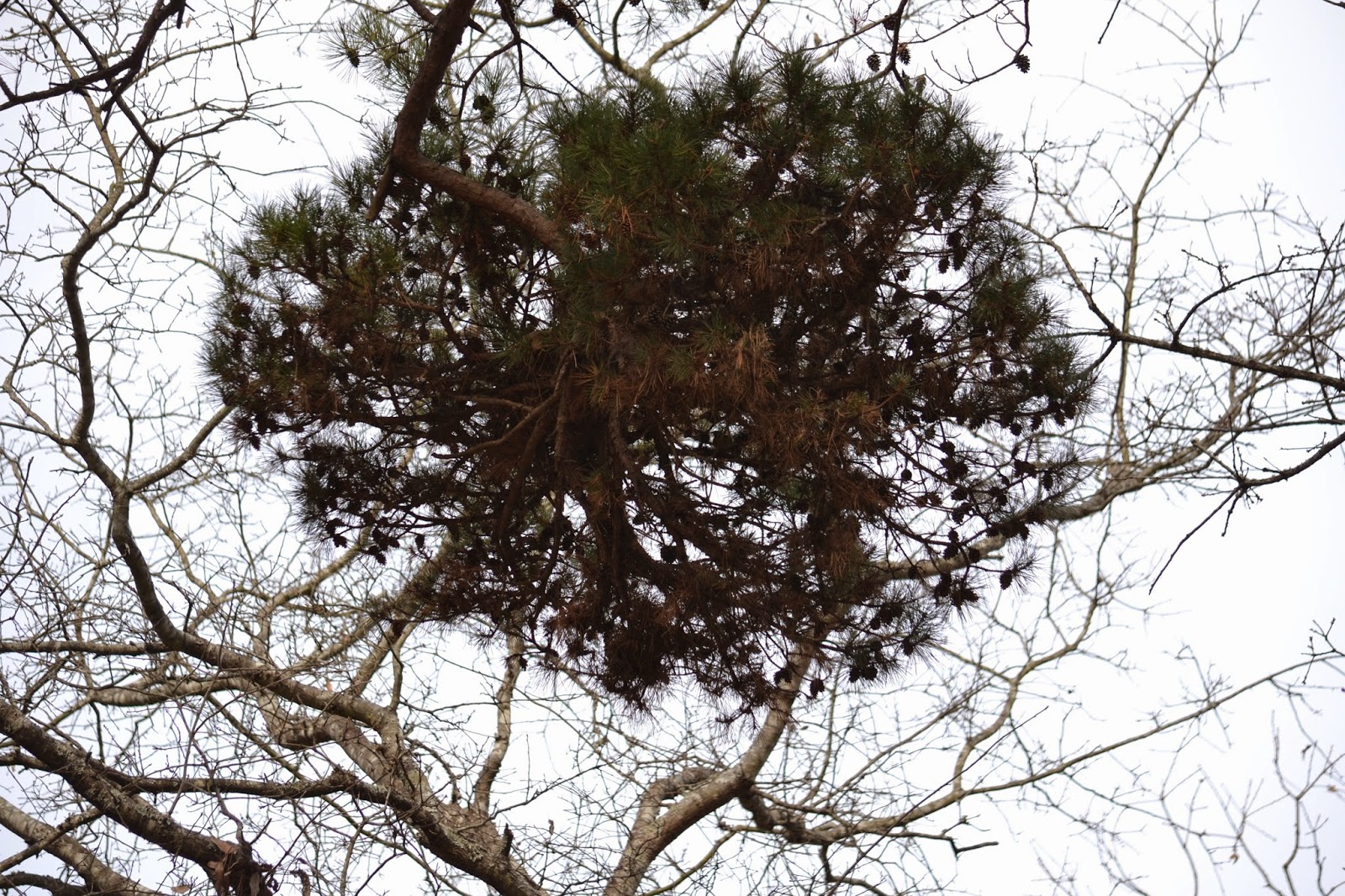My friend, Jean B., asked last fall if I was no longer writing my blog
and I said, “Oh, yes, I am still writing away.” Not! Truth is I have been so
very, very busy lazy. I was beginning to think last year no one was
reading my blog, commenting or didn't find it interesting so I just quit! So
there! But, just like a bad penny, I am back.
 |
| On Timberidge Trail |
This is a great example of a broom or witch’s
broom. These are point mutations
that cause the formation of dense, dwarf growth and abnormal tree branching in
an otherwise normal tree or shrub. I have seen them here on our pine
trees. Brooms can be caused be a variety of factors including diseases, aphids,
environmental stress and random mutations.
Horticulturists and plant
collectors utilize these mutations to create cultivars such as dwarf conifers
and weeping trees. The Japanese cultivate miniature Bonsai trees from these mutations. Because of this,
brooms are often a prized commodity and ‘brooming' or 'broom hunting’ is an
active past-time for some people. Folks that find their first brooms are
sometimes called ‘Baby broomers.’ Broom hunters are a focused lot
and have been known to screech to a halt on a major interstate in their
relentless pursuit of conifer conversation pieces. So keep an eye out for
brooms – and broom hunters!
But more importantly, I think brooming teaches us to really look at nature. Sometimes we miss a lot. Looking down we miss what is up in the trees. Looking far away we miss what is right under foot. Sometimes we are so rushed we miss the sweet smell of a
flower, a colorful bird, the community of plants, the diversity of seeds and seedlings. But with
a little practice, we can learn to notice. And we just might discover a new
plant right under our nose, (and a lot of other wonderful things as well).

